How to Get the Look of a Rope-Hung Bed
http://decor-ideas.org 04/10/2015 17:13 Decor Ideas
Hanging a bed from the ceiling is an expensive structural endeavor; you must take into account the weight of multiple people, the inertia of swinging and the integrity of the home’s ceiling frames. That’s why most rope-hung beds you see are optical illusions. They combine platform beds with purely decorative ropes to give the appearance that the bed is hanging. But they still make a dazzling, dangling design statement. And with the right technique, you will experience no motion sickness with this grounded decorative look. Here’s what you need to know about getting the look of a hanging, swinging bed without the structural headache.
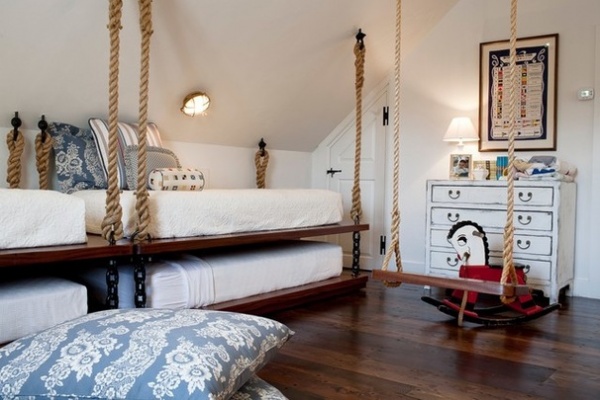
For this kids’ sleeping porch, located in a historic home on Nantucket, Massachusetts, designer Elizabeth Georgantas of Peg Properties used support from the bottom up. The trundle beds are connected to one another and the ground with welded black iron ship chain links, so the ceiling isn’t bearing any weight. The ropes are purely decorative. “For DIYers I would be very careful actually hanging the beds — they would need to be properly secured into a structural beam or properly blocked in the ceiling for the weight,” Georgantas says.
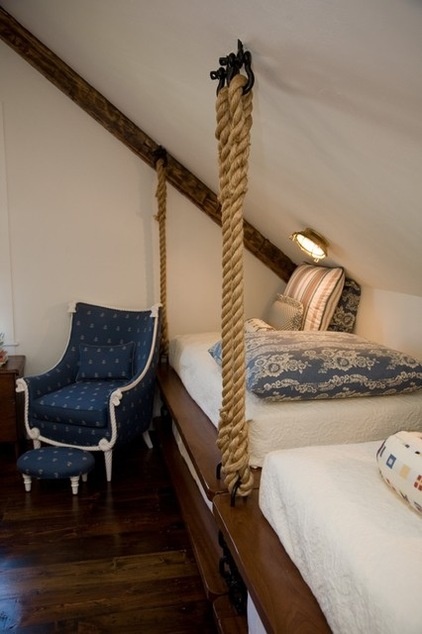
To make sure your room will have enough clearance, Georgantas says, you need to have a high ceiling with enough room to max out the rope visually. “You can always do it on a shorter ceiling, but the less of the rope you have, the less there will be there to see,” she says. “In our case it was a pitched roof, so you had a very short side up against the slated roofline, and then a very long rope on the side of the bed closer into the center peak of the room.”
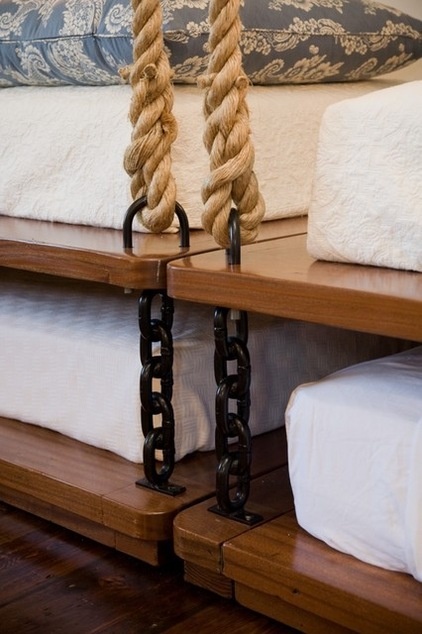
For cost, once you have your beds, it’s simply a matter of selecting the rope and hooks, which can be found at nautical supply stores or an online company such as Knot & Rope Supply, and will likely set you back less than $100 per bed, plus installation. Manila (like hemp or jute) is a strong tug-of-war rope usually recommended for swings and beds; cotton is not as strong.
Ropes come in various sizes; the thicker it is, the more weight it can hold. Georgantas purchased manila rope from a nautical supply company and found a knotting specialist at the Nantucket harbor to do an authentic nautical knot called a spliced tapper.
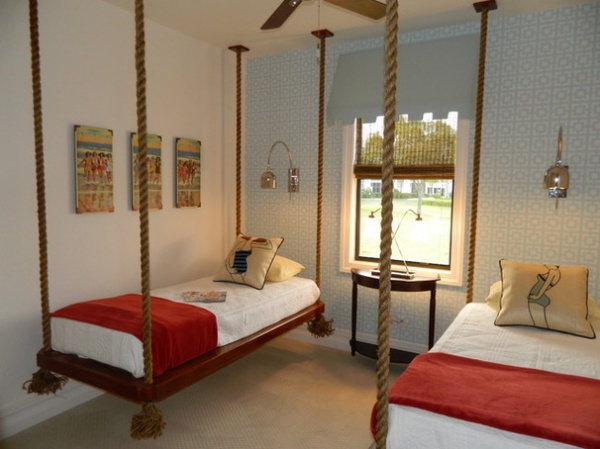
A Coastal Home found the ropes for this model-home bedroom at a local marine store. These ropes often have a petroleum smell; it helps to soak them in soapy water for several weeks to get the smell out.
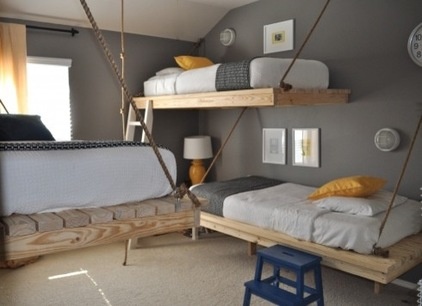
When the look is purely visual (no swinging or swaying), the beds need to be anchored to a wall or the ground. This could be either via a platform bed in which the center part touches the ground but is hidden from sight, or by wall supports either in the back or side of the wall. Once the beds are properly secured to a reinforced wall or the floor, all the ropes and hooks are completely ornamental.
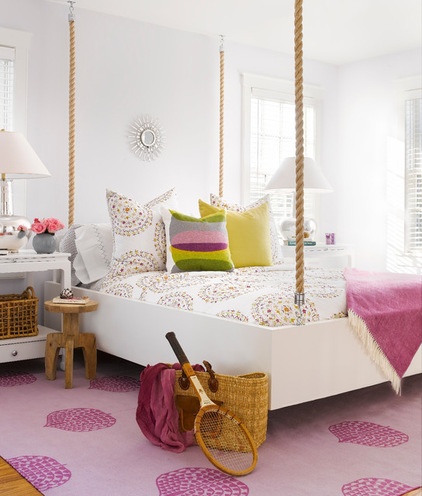
This “floating” bed, also on Nantucket, is actually sitting on a platform that connects the bed to the floor. Designer Anne Becker uses this trick in her designs by hiding the support in the middle of the bed frame. “We kept the foot and side rails low to the ground to hide the platform, as well as setting it towards the middle of the bed so as not to see it unless bending down,” says Becker. “Also, we reinforced the ceiling where the hooks are so that in the event someone did actually try to hang on the rope with their full body weight, the ceiling wouldn’t come crashing down.”
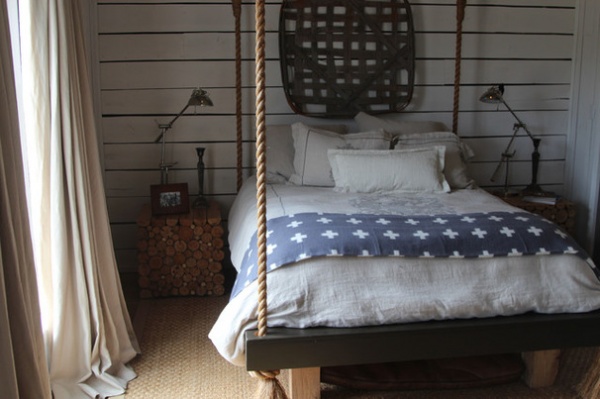
Here a stylish bedroom with rustic woods and textiles gets the floating factor via decorative rope connecting a simple platform bed — with legs in sight on the ground — to the ceiling. With sturdy nautical rope and ceiling hooks, you could get the look with an inexpensive retail or custom bed and a drill, without any reinforcements or actually hanging the bed.
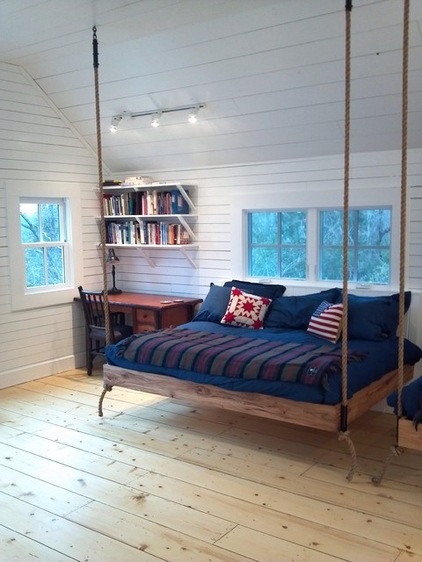
This suspended bed is attached to the wall with hinges — you can remove the ropes and fold the bed against the wall. Professional Construction Solutions attached the ropes to the ceiling with lag bolts and prepared wood blocking prior to installing the 1-by-6 finish boards.
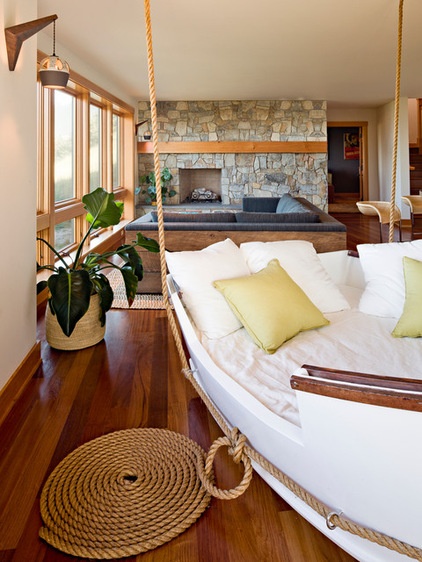
Anchoring a vintage boat in the living room takes this look to the extreme. In this Portland, Oregon, home, rustic reclaimed wood and pools of nautical rope add even more visual impact.
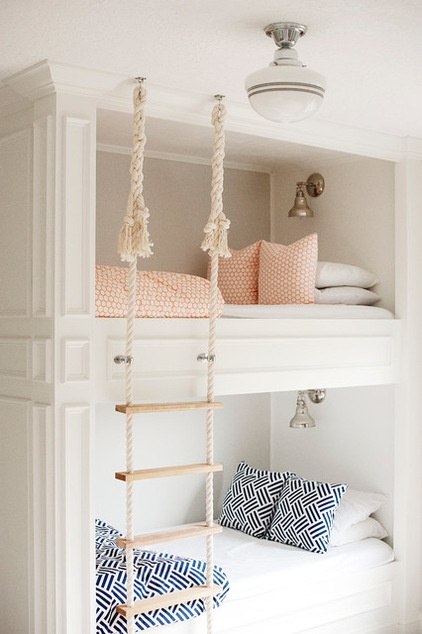
For minimalists who want to dabble in this decor, take a page from Mikael Reeve Monson, who adorned a boy-girl bunk with a rope ladder and posted a tutorial here. A little rope goes a long way for a splash of nautical style, and given that many “hanging” beds are just an illusion, see what you can create with some crafty marine rope.
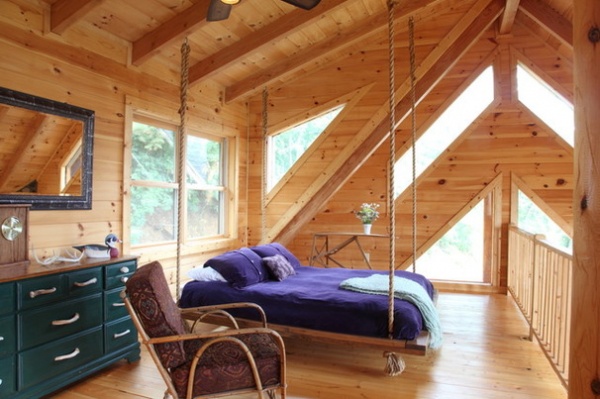
To truly hang a bed with no support in the wall or the floor, you need to have either very strong beams above or blocking in the ceiling to give support, which can end up being more expensive than the purely decorative look.
See more on real swinging beds
Related Articles Recommended












